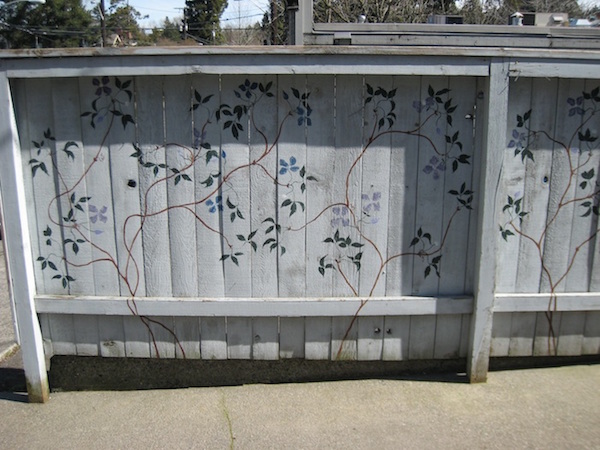| Most people familiar with the genus Clematis, deem it as full of beautifully flowered vines, or climbers. Ethnobotanists realize that certain species are used in ways other than as ornamental garden plants. |
| There are anywhere from 320 to 375 species of Clematis according to what authority is consulted. They are widespread but most are from the northern temperate zone. They vary from wimpy herbs to robust 100-foot long woody vines that can engulf large trees. Some are evergreen; most have annual stems that die back or at least their foliage is killed by frost. |
| Of over 20 edible Clematis species, I here share with you those that I have learned about. First, note that in general Clematis plant juice or sap is irritatingly acrid and more or less unpleasant to humans, if not outright toxic. Of the species eaten by people, usually the young tender growing shoots are cooked to render them into harmless greens. Here is the list of Clematis species noted as edible: |
| Clematis accuminata DC. |
| Clematis apiifolia DC. |
| Clematis brachyura Maxim. |
| Clematis Buchananiana DC. |
| Clematis Cadmia Buch.-Ham. ex Hook. fil. & Thomson |
| Clematis chinensis Osbeck |
| Clematis Flammula L. |
| Clematis graveolens Lind. 1846, non Hook. 1850 |
| Clematis hexapetala Pall. |
| Clematis ianthina Koehne |
| Clematis koreana Kom. |
| Clematis linearifolia Steud. |
| Clematis microphylla DC. |
| Clematis paniculata Th. 1794, non J.E. Gmel. 1791 |
| Clematis patens C. Morr. & Decne. |
| Clematis Pierotii Miq. |
| Clematis pubescens Hügel ex Endl. 1837, non Benth. 1839 |
| Clematis recta L. |
| Clematis Roylei Rehd. |
| Clematis serratifolia Rehd. |
| Clematis terniflora DC. |
| Clematis terniflora var. mandshurica (Rupr.) Ohwi |
| Clematis trichotoma Nakai |
| Clematis Vitalba L. |
Clematis spp.
|
| For most of the species, I found only few or one account reporting human edibility. But Clematis Vitalba is reported edible by over twenty sources. It is eaten by at least Albanians, Bosnians, Italians, and Spaniards. The young spring shoots are boiled first, then may be fried with bacon, eggs and cheese, added to soups. |
| For three species in Australia, the underground portions rather than leafy shoots are eaten. Clematis linearifolia roots are eaten raw; Clematis microphylla roots are cooked, pounded and kneaded into a dough; Clematis pubescens tubers are roasted or mashed. Clematis Cadmia grows from India to Vietnam, and in India its roots are eaten. |
| Three species are reported eaten only as famine foods in China: leaves of Clematis chinensis and Clematis hexapetala leaves, repeatedly boiled; and Clematis paniculata leaves and flowers. |
| In Taiwan, leaves of Clematis terniflora are eaten; in Korea, its variant Clematis terniflora var. mandshurica has its tender tips eaten. |
| The Jinuo people of Yunnan, China, are reported to eat tender young leaves of Clematis species (plural). More than 150 Clematis species grow in China, with plenty in Yunnan. Most of the Jinuo diet is collected from forest lands and fields nearby. Some 179 species of edible plants are reported in this paper: Ethnobotanical study of traditional edible plants Jinuo Nationality by Jie-Ru Wang and Chun-Lin Long in Acta Botanica Yunnanica 17(2): 161 - 168 (1995). |
| At least ten species are reported as eaten in Korea, three without details as to usage: Clematis koreana, Clematis patens and Clematis serratifolia. |
| For the 8 species of 22 listed above that I did not single out, their young tender shoots and leaves are cooked as vegetables, in various places ranging from Europe to Nepal to Korea --mostly the latter. |
| There is a species that is not beyond a reasonable doubt. In Siran Valley of Pakistan, Clematis graveolens is listed, without an author, as a wild edible vegetable/potherb on page 257 of Plants and Plant Resources of Siran Valley, Mansehra, N.W.F.P., Pakistan by Ghulam Mujtaba Shah (a 2007 thesis). But earlier, on page 75, the author lists three "common" Clematis species of Siran Valley as: |
| Clematis connata DC. |
| Clematis grata Wall. 1830, non O. Hoffm. ex Baker 1883 |
Clematis montana Buch.-Ham.
|
| Clematis graveolens Lindl. 1846 is an accepted species; Clematis graveolens Hook. 1850 is a synonym of Clematis orientalis L. The Flora of Pakistan notes that both occur in Pakistan and are often confused. In other words, either Clematis grata or Clematis graveolens is likely to have been the plant eaten, but we do not know. My hunch is the former; Clematis graveolens is heavily scented, and used medicinally. |
The preceding is the most complete account of the subject of edible Clematis. I am not suggesting that you try eating any. But the usual practice of labeling the entire genus as an unqualified "poisonous" is incorrect; at least some Clematis, likely more than I have listed, are rendered wholesome food through cooking --a practice used for many plants around the world. Next spring, I will post photos of the young tender shoots of some of these Clematis species.
Back |

a Clematis mural on a fence in Seattle; photo by ALJ
|

